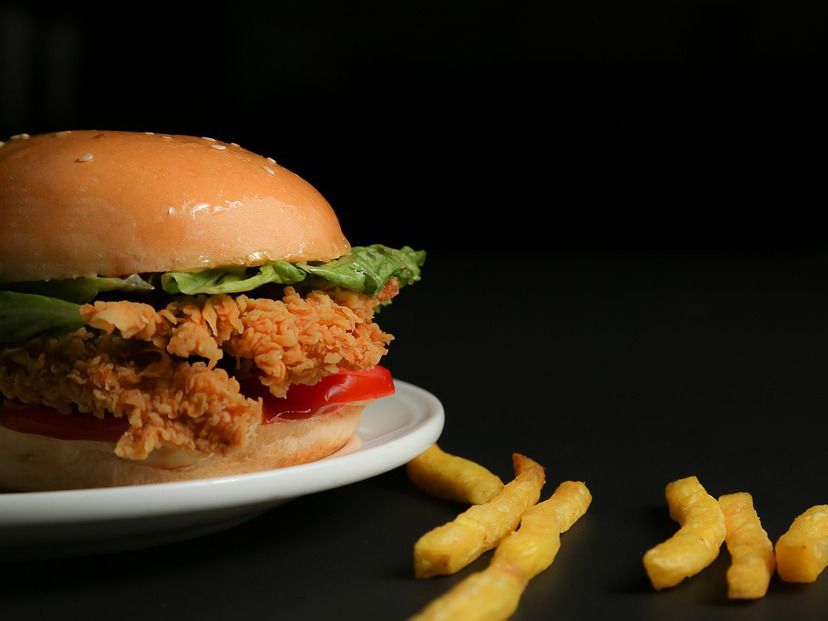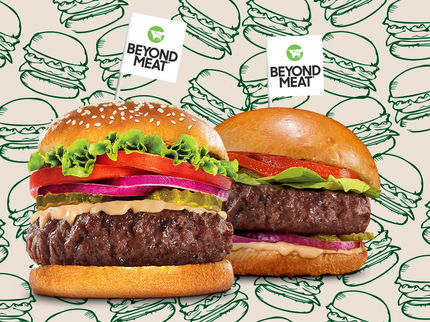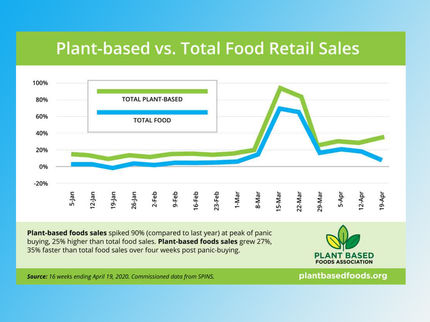That's in meat substitutes
Conscious meat and sausage consumption and thus meat-free product innovations are becoming increasingly popular among consumers. In the meantime not only vegan grill sausages, but also burger products based on plant proteins have reached the mass market. Numerous start-ups bring innovative meat replacement products onto the market. TÜV SÜD explains the differences between the current meat alternatives.

symbol image
shouravsheikh/ Pixabay
Even consumers who do not live strictly vegan or vegetarian lives are increasingly turning to meat substitutes. One of the main arguments are more favourable sustainability properties in production: the land, energy and water consumption of the substitute products are lower compared to conventional meat products. Not only manufacturers, but also retailers, gastronomy and delivery services were increasingly adapting to this. "The food industry, which has always been very innovative in Germany, will gradually add plant-based meat substitutes to its range as demand rises," says Dr. Andreas Daxenberger of TÜV SÜD. "A complete trend reversal is not to be expected due to the still small number consistently vegan or vegetarian buying consumers however. Essentially, there are currently two different approaches to meat substitution:
Meat based on cell cultures
Artificial meat production attempts to breed meat cell cultures from living cells of an animal using biomedical methods and then to produce meat tissue or meat products from them. The result is the so-called in vitro meat, also called "clean meat" or "cultivated meat". According to a study by the Fraunhofer Institute on the subject of food innovations, consumers are reluctant towards this innovation: 39% of consumers have already heard of it, but only 13% perceive the benefits of this innovation positively. In addition, the legal hurdles to placing such meat on the German market are very high. According to the European Novel Food Regulation, it would be a novel product and mandatory to undergo its own approval procedure in order to prove that it is harmless to health. The meat from the retort has been available since around 2013, when the University of Maastricht presented an in vitro burger to the public for 250,000 euros. Since then, companies all over the world have been researching market maturity, with costs of ten to eleven euros per burger considered feasible today. This product idea from research is currently of no significance on the food market in Germany.
Meat based on vegetable proteins
Another concept for meat substitution is the use of vegetable proteins to produce meat-like foods, especially soya, peas, lentils, lupins or wheat protein (seitan). These protein-rich raw materials initially provide a protein mass. Using pressure, temperature and structuring ingredients (e.g. modified starch, locust bean gum, xanthan gum), meat-like textures are created which try to come as close as possible to the bite and taste of beef or chicken. Depending on the product requirements, additives such as stabilizers or acidity regulators are also used. Additives in conventional meat products and comparable substitutes are not, however, generally comparable, since the type and quantity of additives may differ in individual cases. A look at the list of ingredients will help the interested consumer here.
"For meat substitute products from vegetable proteins, no separate approval procedure is required as a novel food," says Daxenberger. "These foods have already been established in Germany for many years and are finding growing sales. However, consumers must not be misled or deceived, since it is not meat within the meaning of the traditional definition". The first international start-up companies and retail chains are currently pushing their way onto the German market with a new meat substitute burger, which consists mainly of pea protein and is coloured with beetroot juice.
Declaration of plant based meat substitutes
Since the guiding principles for vegetarian and vegan foods apply in Germany, special declaration rules must be observed here. For example, the protein source must be identified at a clearly visible point on the food packaging, e.g. "with pea protein". If several similar proteins have been used, the package may also read "with plant protein". Special designations of origin or protected geographical indications may not be used to replace meat. For example, it must not simply be called "Thüringer Rostbratwurst" for a bratwurst produced from plants. Since the introduction of the guidelines for vegetarian and vegan foods in December 2018, it has no longer been possible to use the names of special meat cuts such as "beef fillet".
Note: This article has been translated using a computer system without human intervention. LUMITOS offers these automatic translations to present a wider range of current news. Since this article has been translated with automatic translation, it is possible that it contains errors in vocabulary, syntax or grammar. The original article in German can be found here.





























































